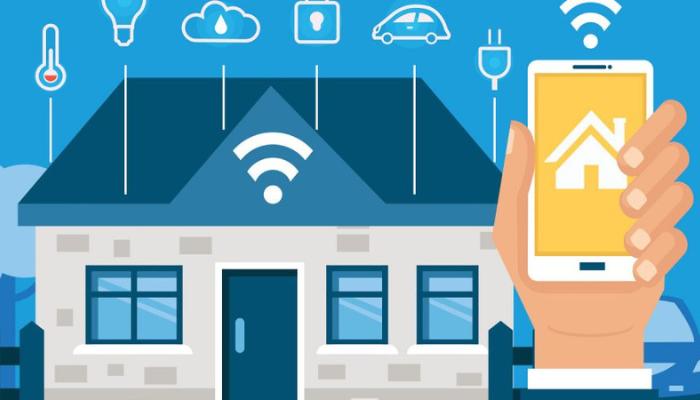The Best Residential Internet Plans in the United States
Whether it’s streaming your favorite shows, making video calls with friends and family, or even working remotely, having a reliable and fast home internet connection is essential these days. With so many options available, it can be difficult to know where to start in finding the ideal plan.
Advertising
In this comprehensive guide, we’ll explore everything you need to know about home internet plans, from speeds and prices to types of connections and additional services offered by providers. Let’s dive into this journey to find the perfect internet plan for your needs!
Internet Speed
Advertising
When deciding on a home internet plan, the connection speed is one of the most crucial factors to consider.
It’s not just about a number in megabits per second; internet speed directly impacts your online experience, influencing whether you can enjoy activities like streaming high-definition video, playing online games without delays, and quickly downloading files.
Advertising
Therefore, understanding how internet speed is measured and how it relates to your specific needs is essential to ensure that you choose the most suitable plan for your online activities.
How to Assess the Right Speed
- Analyze Your Needs: Consider how many devices will be connected and the activities performed. For example, a family streaming on multiple devices needs a higher speed than someone using the internet for basic browsing.
- Check Provider Offers: Compare the speeds offered by different home internet providers in the United States. Often, they offer a variety of options to cater to different user profiles.
- Test Your Connection Speed: After subscribing to an internet plan, conduct regular speed tests to ensure you’re receiving what was promised by the provider.
Prices and Promotions

In addition to connection speed, prices and promotions play a crucial role in choosing the ideal home internet plan in the United States. Everyone wants to save money and get the best value for their money, right?
Here are some valuable tips to help you find the perfect balance between affordable price and service quality:
- Compare Prices: Thoroughly research the prices of plans offered by internet providers. Consider possible additional fees throughout the contract.
- Take Advantage of Promotions: Keep an eye out for provider promotions. These may include discounts for the first few months, free installation, or giveaways.
- Negotiate: Don’t hesitate to negotiate with the provider. Sometimes, you can get better prices or additional benefits just by talking to a sales representative.
By following these tips, you’ll be better prepared to find the home internet plan that offers the best value for you, combining affordability with service quality.
Comparison of the Best Residential Internet Plans
Now that you understand the importance of speed and pricing, it’s time to compare the best residential internet plans. Let’s analyze the available options and highlight the features, advantages, and costs of each provider.
Connection Types
Exploring the various types of connections available is essential when selecting a home internet plan. Each type of connection has its own characteristics and benefits, and understanding them can help you make the right choice for your specific needs.
Let’s take a look at the main types of connections available today:
- Fiber Optic: Recognized for its ultra-fast speeds and exceptional stability, fiber optic is the ideal choice for demanding users seeking maximum performance in their online activities.
- DSL (Digital Subscriber Line): This type of connection uses existing telephone lines to provide internet. While not as fast as fiber optic, DSL is a reasonably fast option and widely available in many areas.
- Cable: Cable connection utilizes the infrastructure of television cables to offer high-speed internet. It’s more common in urban areas and can be an excellent option for those seeking speed and stability.
- Satellite: Ideal for rural or remote areas, satellite internet offers coverage in virtually any location in the country. Although it may be slightly slower than other options, it’s a viable solution for those who don’t have access to other forms of high-speed internet.
Customer Service
When it comes to choosing a home internet plan in the United States, customer service plays a crucial role in the user experience. Having the confidence that you will receive fast and efficient technical support is essential for a smooth connection.
Here are some strategies to evaluate the customer service offered by internet providers:
Assess Customer Reviews
Before making a decision, it’s helpful to check reviews and comments from other customers about the customer service of different internet providers in the United States. This provides valuable insights into the level of customer satisfaction and the quality of support provided.
Test Technical Support
An effective way to assess customer support is to contact the provider and ask some questions or simulate a technical issue. This allows you to experience real-time support and evaluate the effectiveness and courtesy of the support team.
Check Availability
Make sure to check the customer service and technical support hours offered by the provider. It’s important to choose a provider that is available when you need assistance, even outside of standard business hours.
By considering customer service when selecting a home internet plan in the United States, you can ensure a smooth and reliable experience with fast and effective support whenever needed.
Data Limits and Fair Usage Policies
When choosing a home internet plan, it’s important to understand the data limits and fair usage policies established by the provider. Some plans may have data restrictions, meaning you could be charged for using more than the specified amount of data within a certain period.
- Understand Data Limits: Check if the plan you’re considering has any data limits and, if so, what those limits are. Some providers offer unlimited plans, while others may impose monthly data caps.
- Know Fair Usage Policies: Some companies have fair usage policies that may result in speed reduction or additional fees if you exceed a certain data limit. Make sure to understand these policies before committing to a plan.
- Consider Your Usage Needs: If you do a lot of high-definition video streaming, online gaming, or frequently download large files, it might be best to choose a plan with unlimited data to avoid unpleasant surprises on your bill.
Real Speed vs. Advertised Speed
When evaluating home internet plans in the United States, it’s important to understand the difference between real speed and advertised speed. Advertised speed is the theoretical maximum speed that the provider claims you can achieve, while real speed is the speed you actually experience in your day-to-day usage.
- Check Real Speed: Before choosing an internet plan, research the real speeds reported by other customers of the provider. This will give you a more accurate idea of what to expect in terms of connection speed.
- Understand Factors Affecting Speed: Several factors can affect the real speed of your internet connection, including the distance to the server, the quality of the Wi-Fi router, and the number of devices connected simultaneously.
- Read the Fine Print: Some providers may include a clause in their contracts that allows for variations in advertised speed. Be sure to read the terms of the contract carefully to understand exactly what is being promised.
By understanding the difference between real and advertised speed, you can make a more informed choice when selecting a home internet plan in the United States.
Upgrade and Downgrade Options
Another important aspect to consider when choosing a home internet plan is the flexibility to upgrade or downgrade your plan as your needs change over time.
- Check the Upgrade and Downgrade Policy: Before committing to an internet plan, verify if the provider offers flexible options for upgrading and downgrading. This will allow you to adjust your plan as needed without penalties or additional fees.
- Consider the Future: In addition to current needs, think about the future. If you plan to add more devices or increase streaming, opt for a plan with more bandwidth to avoid issues.
- Keep an Eye on Upgrade Promotions: Many providers offer special promotions for plan upgrades, such as discounts in the first months of service or additional benefits. Stay alert for these offers to save money when upgrading your internet plan.
By choosing a home internet plan with flexible upgrade and downgrade options, you can have the peace of mind knowing that you can adjust your plan as your needs change over time.
Additional Services
In addition to the internet connection itself, many providers offer a variety of additional services to complement your online experience. Here are some examples:
- Online Security: Some providers offer online security services, such as antivirus and malware protection, to safeguard your devices against online threats.
- Subscription TV: Many internet providers also offer subscription TV services, allowing you to watch a variety of television channels directly through your internet connection.
- Landline Phone: If you still use a landline phone at home, it may be advantageous to choose a plan that includes landline phone service to save money on your monthly bill.
- Cloud Storage: Some providers offer cloud storage as part of their internet packages, allowing you to backup and access your files from anywhere.
By considering the additional services offered by internet providers in the United States, you can customize your online experience according to your needs and preferences.
Provider Reputation
Finally, when choosing a home internet plan in the United States, it’s important to consider the reputation of the provider. Here are some ways to assess the reputation of an internet provider:
- Research Reviews and Comments: Look for reviews and customer comments about the internet provider on reliable websites, such as the Better Business Bureau or Consumer Reports. This can give you an idea of customer satisfaction levels and the quality of services offered.
- Check Uptime: Look for information about the provider’s uptime, or how long their services are available and functioning without interruptions. A provider with a good uptime history is usually more reliable and stable.
- Evaluate Customer Support: Assess the quality of customer support offered by the internet provider. A provider with fast and efficient technical support can make all the difference when you encounter issues with your internet connection.
By considering the reputation of the internet provider, you can be sure to choose a reliable and high-quality provider for your home internet needs in the United States.
We hope this comprehensive guide to home internet plans in the United States has been helpful. From fundamental aspects such as speed and price to details such as types of connection, customer support, and provider reputation, we’ve provided comprehensive information to help you make an informed decision.
Always remember to research and compare all available options before deciding. A fast and reliable internet connection can make all the difference in your online experience!





